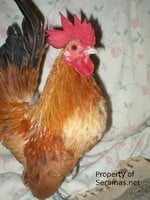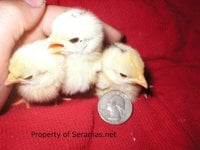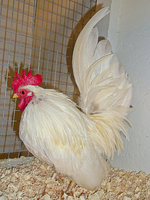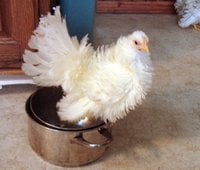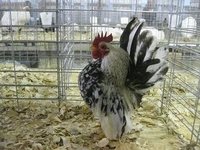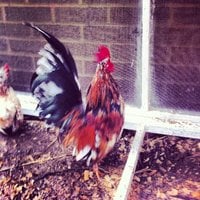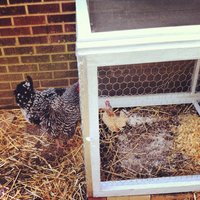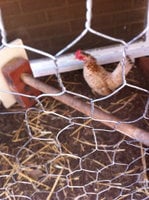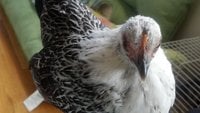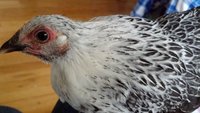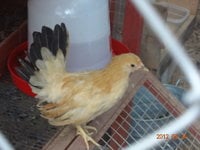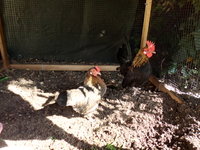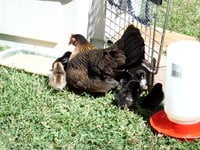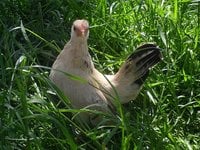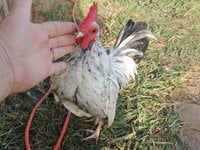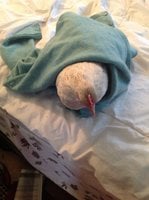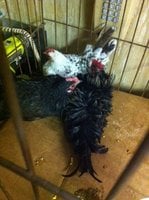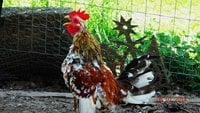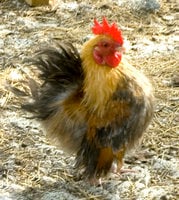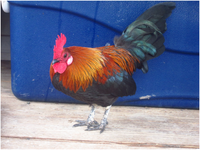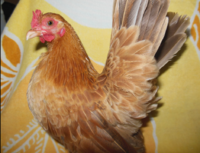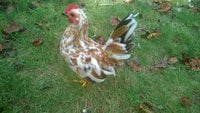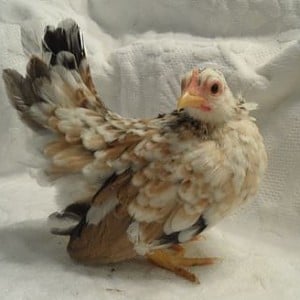General Information
- Breed Purpose
- Ornamental
- Comb
- Single
- Broodiness
- Frequent
- Climate Tolerance
- Heat
- Egg Productivity
- Low
- Egg Size
- Small
- Egg Color
- Light Brown
- Breed Temperament
- Friendly, Easily handled, Calm, Bears confinement well, Quiet, Docile
- Breed Colors/Varieties
- This breed is not standardized yet. The Serama Council of North America is working towards ABA and APA acceptance of the white serama first. The currently recognized colors of the SCNA are White, Blue, Wheaton, Black-Breasted Red, Black, and Black-Tail Buff. These should be recognized by the ABA and APA after the white serama. A popular variety of the serama is the silkied serama. They are accepted at SCNA sanctioned shows.
- Breed Size
- Bantam
The Serama breed originated in Malaysia, apparently through the crossing of Japanese and Malaysian bantams. The modern breed is attributed to the efforts of Wee Yean Een from Kelantan, who named the breed "Serama" after Rama, the title of the Kings of Thailand. There are no written standards for the breed in its native country, though they do have an overall guide on scoring and judging for competitions in Malaysia. Many breeders have a style or type that they breed to, but breeders often keep several "styles". Hence there is quite a lot of diversity in Malaysia.
In the USA, the Serama breed is promoted by a couple organisations, the The American serama association (ASA) and the Serama Council of North America (SCNA). This council helped to introduce the Serama to North America in various National Poultry shows. In the spring of 2004 a Serama only-show, known as the Cajun Classic, in Baton Rouge, Louisiana was held. The "American Serama" as put forth by the Serama Council of North America has gained acceptance by the APA and the American Bantam Association, as of April 2011. In early 2012, another group known as the American Serama Association was formed to help gain APA and ABA acceptance of more varieties of Serama.
In the UK, Seramas were initially imported in 2004. Birds were imported from both the US and directly from Malaysia. In 2005, a small group of Serama owners and enthusiast decided to form the "Serama Club of Great Britain", the first Serama club in the UK. They went on to established the standard for the Serama breed for the UK. Seramas are still relatively rare and expensive in much of mainland Europe, with the Netherlands probably having the largest number of Seramas outside the UK. Most of the stock in the Netherlands are descendent from birds/eggs imported from America and from the UK.
In France and other European countries they are increasing in popularity with 4 classes of serums.
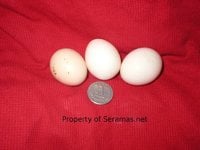
Serama eggs
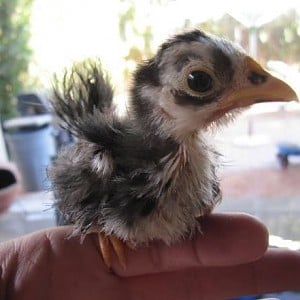
Serama chick
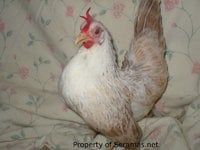
Serama hen
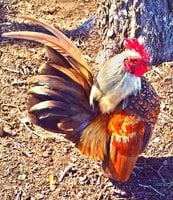
Serama rooster
To learn more about this breed and their owners' and breeders' experiences with them, see our breed discussion here: https://www.backyardchickens.com/threads/chicken-breed-focus-serama.1110870/

